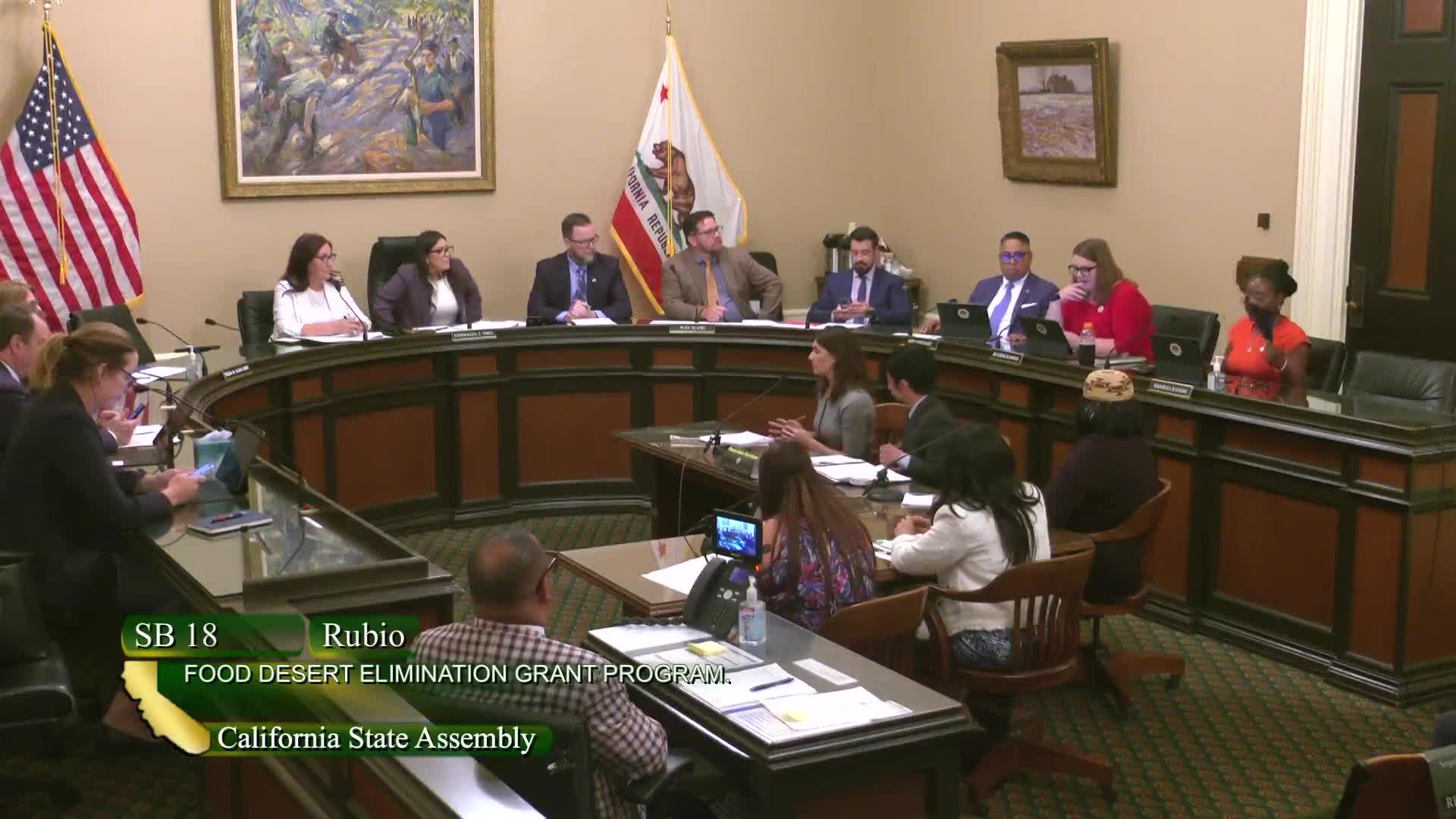California lawmakers address grocery store closures with new incentive programs
July 02, 2025 | California State Assembly, House, Legislative, California
This article was created by AI summarizing key points discussed. AI makes mistakes, so for full details and context, please refer to the video of the full meeting. Please report any errors so we can fix them. Report an error »

In a recent meeting of the Assembly Agriculture Committee, California lawmakers discussed the pressing issue of grocery store closures and their impact on rural communities. Over the past decade, only 15 grocery stores employing over 100 people have closed statewide, according to data from the Economic Development Department. This figure represents a mere 0.0101% of all retail closures in California, yet the implications for rural areas are profound.
Committee members highlighted the critical role grocery stores play as community hubs, especially in remote regions where residents often travel long distances for basic necessities. One lawmaker shared her experience living in Modoc County, where the nearest Walmart is a 100-mile drive, emphasizing the challenges faced by families as rising gas prices add to their grocery bills. She noted that many children in her district go home hungry, underscoring the urgent need for accessible food sources.
To address these challenges, lawmakers are advocating for an incentive program aimed at encouraging grocery stores to establish locations in underserved areas. This initiative seeks to not only attract new stores but also support existing ones in offering fresh, local products. The committee expressed hope that these efforts would help revitalize food access in rural communities, where grocery stores often sponsor local events and serve as vital social centers.
The discussion also touched on the high unemployment rates in certain areas, with one representative noting that in places like Blythe, the absence of grocery stores exacerbates economic challenges. With 1 in 4 children in some regions unsure of where their next meal will come from, the need for effective solutions is more urgent than ever.
As the committee moves forward, the focus remains on fostering a supportive environment for grocery stores to thrive, ensuring that all Californians, regardless of their location, have access to essential food resources.
Committee members highlighted the critical role grocery stores play as community hubs, especially in remote regions where residents often travel long distances for basic necessities. One lawmaker shared her experience living in Modoc County, where the nearest Walmart is a 100-mile drive, emphasizing the challenges faced by families as rising gas prices add to their grocery bills. She noted that many children in her district go home hungry, underscoring the urgent need for accessible food sources.
To address these challenges, lawmakers are advocating for an incentive program aimed at encouraging grocery stores to establish locations in underserved areas. This initiative seeks to not only attract new stores but also support existing ones in offering fresh, local products. The committee expressed hope that these efforts would help revitalize food access in rural communities, where grocery stores often sponsor local events and serve as vital social centers.
The discussion also touched on the high unemployment rates in certain areas, with one representative noting that in places like Blythe, the absence of grocery stores exacerbates economic challenges. With 1 in 4 children in some regions unsure of where their next meal will come from, the need for effective solutions is more urgent than ever.
As the committee moves forward, the focus remains on fostering a supportive environment for grocery stores to thrive, ensuring that all Californians, regardless of their location, have access to essential food resources.
View full meeting
This article is based on a recent meeting—watch the full video and explore the complete transcript for deeper insights into the discussion.
View full meeting
